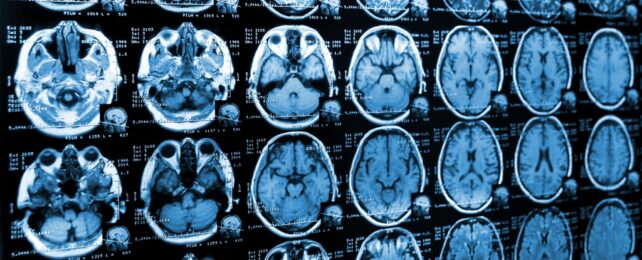Our brains experience a litany of changes as we age, right down to the way its DNA is translated. Now a new study has found that in people with cocaine use disorder those changes can accumulate at an accelerated rate.
Cocaine is one of the most addictive substances known to humans. It interferes with the brain's reward pathways, forcing its cells to continue to pump out pleasurable signals until the drug wears off.
Estimates from the US suggest that one in five people who use cocaine go on to develop an addiction.
But precisely how a drug that interferes with the junctions between brain cells evokes addictive behaviors that in turn manifest in substance abuse is a chain of events researchers are still trying to understand.
One possibility lies in non-coding modifications made to the DNA packed inside the brain's cells, which alters the way its genes are switched on and off. So research took a look at patterns of these so-called epigenetic changes in a brain region called Brodmann Area 9.
Situated in the prefrontal cortex – the front part of the brain that rests behind the forehead – Brodmann Area 9 (BA9) is thought to be important for self-awareness and inhibitory control; two things that get muddled in substance use disorders.
Much of what we know about what cocaine does to brain cells comes from studies in mice. Few investigations have examined the lasting effects of cocaine in human brain tissue, though two studies to date have detected regions of DNA that show excessive methylation in the brains of people with cocaine addictions.
This new study on human brain tissues retrieved post-mortem found the same again: in BA9, cocaine users had sections of DNA festooned with methyl groups – chemical changes which have been found to accumulate with age and in age-related diseases.
To get to these results, researchers compared the levels of DNA methylation in brain tissue samples from 21 people who had cocaine use disorder and another 21 who didn't.
DNA methylation is considered one of the molecular hallmarks of aging. Typically, the presence of more methyl groups dials down the activity of nearby genes because the cell's machinery can no longer access the genetic instructions contained within.
Knowing how methyl groups attached themselves to DNA over time, DNA methylation can be used as an 'epigenetic clock' to see whether tissues are aging faster or slower compared to their expected chronological age.
In this study, the researchers used two different epigenetic clocks to try to account for any variation.
"We detected a trend towards stronger biological aging of the brain in individuals with cocaine use disorder compared to individuals without cocaine use disorder," says Stephanie Witt, senior author of the study and molecular biologist at the Central Institute of Mental Health in Germany.
"This could be caused by cocaine-related disease processes in the brain, such as inflammation or cell death."
The researchers think that these molecular alterations may contribute to the higher-level functional and structural changes observed in the brains of people with cocaine use disorder, and in turn, behavioral aspects of addiction.
Among the sequences that showed the strongest changes in DNA methylation in this study were two genes that according to previous research regulate behavioral aspects of cocaine intake in rodents.
However, the researchers acknowledge that their study was small and more research is required, perhaps to see what molecular changes the brain accrues over time with ongoing drug use.
"As biological age estimation is a very recent concept in addiction research and is influenced by many factors, further studies are required to investigate this phenomenon, with larger sample sizes than were possible here," says Witt.
Larger studies would also help to tease apart the effects of other conditions, such as mood disorders, that so often accompany substance use disorders. Many of the deceased donors in this study experienced major depression, which may have altered their brain function in other ways.
The researchers also made note of whether donors were intoxicated when they died or had been using medications to treat depression or other conditions, although the study was too small to adjust for this.
Nevertheless, it builds on previous studies of other brain regions to expand our knowledge of how drug addiction can meddle with the brain.
"Looking at multiple brain regions allows a more complete understanding" of the role of DNA methylation in cocaine use disorder, the researchers conclude.
The research was published in Frontiers in Psychiatry.
